The Abbey Road Photo Shoot
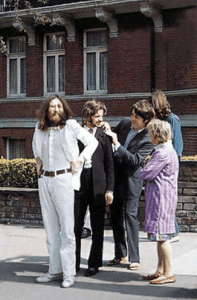 From the Beatle Bible – “All four Beatles gathered at EMI Studios on the morning of Friday, August 8, 1969, for one of the most famous photo shoots of their career. Photographer Iain Macmillan took the famous image that adorned their last-recorded album, Abbey Road.
From the Beatle Bible – “All four Beatles gathered at EMI Studios on the morning of Friday, August 8, 1969, for one of the most famous photo shoots of their career. Photographer Iain Macmillan took the famous image that adorned their last-recorded album, Abbey Road.
“A policeman held up the traffic as Macmillan, from a stepladder positioned in the middle of the road, took six shots as the group walked across the zebra crossing just outside the studio.
“Iain Macmillan was a freelance photographer and a friend to John Lennon and Yoko Ono. He used a Hasselblad camera with a 50mm wide-angle lens, aperture f22, at 1/500 seconds.
“Prior to the shoot, Paul McCartney had sketched his ideas for the cover, to which Macmillan added a more detailed illustration.
“As the group waited outside the studio for the shoot to begin, Linda McCartney took a number of extra photographs. Continue reading “The Abbey Road Photo Shoot” →
Comparing Keener to the Billboard Hot 100
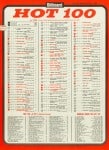 Back before national programmers and record company marketing money decided which records got airplay, local stations could be true hit makers. WKNR helped rocket a ton of Detroit area talent onto the national stage, including Bob Seger, Deon Jackson, Mitch Ryder and the Rationals. Keener was also the key proving ground for Motown acts. Berry Gordy, Jr.’s special relationship with Scott Regen made it possible for Keener to have unique on-air access to artists and the WKNR Music Guide became a leading indicator of potential national success.
Back before national programmers and record company marketing money decided which records got airplay, local stations could be true hit makers. WKNR helped rocket a ton of Detroit area talent onto the national stage, including Bob Seger, Deon Jackson, Mitch Ryder and the Rationals. Keener was also the key proving ground for Motown acts. Berry Gordy, Jr.’s special relationship with Scott Regen made it possible for Keener to have unique on-air access to artists and the WKNR Music Guide became a leading indicator of potential national success.
How did the WKNR Music Guide compare to the industry standard Billboard Hot 100? Visit the Motor City Radio Flashback site to see a 1964 example.
“Exchanging” Telephone Numbers
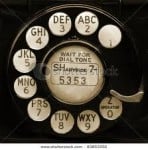 For those who came of age in Detroit anytime before the 1970s, the phrase “TYler 8-7100” likely resonates in memory. That was the phone number for the “We do good work” folks at Belvedere Construction. The use of “Exchange Names” as a way to help remember telephone numbers had its genesis in England in the 20s. By the 50s we were using the 2 Letter – 5 number format to delineate phone numbers across the Detroit area. Continue reading ““Exchanging” Telephone Numbers” →
For those who came of age in Detroit anytime before the 1970s, the phrase “TYler 8-7100” likely resonates in memory. That was the phone number for the “We do good work” folks at Belvedere Construction. The use of “Exchange Names” as a way to help remember telephone numbers had its genesis in England in the 20s. By the 50s we were using the 2 Letter – 5 number format to delineate phone numbers across the Detroit area. Continue reading ““Exchanging” Telephone Numbers” →
Jungle Fever
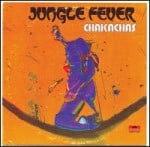 If Mrs. Knorr thought that Tommy James’ “I Think We’re Alone Now” was a little too much for the Keener airwaves, then “Jungle Fever” by the Chakachas was well over the edge of the envelope. That it became a hit at all is one of those improbable stories that seem to proliferate in the music business.
If Mrs. Knorr thought that Tommy James’ “I Think We’re Alone Now” was a little too much for the Keener airwaves, then “Jungle Fever” by the Chakachas was well over the edge of the envelope. That it became a hit at all is one of those improbable stories that seem to proliferate in the music business.
Listen to the record, or look at any of the promotional material and you’d be certain that the band was African American, or Afro-Cuban. In fact, they were a bunch of white guys from Belgium, who first got together in the 1950s. By 1965 they had gone their separate ways and it wasn’t until 1970 that producer Roland Kluger pulled the bulk of the group back into studio to record one of the most infamous records of the Keener era. Continue reading “Jungle Fever” →
Keener Bosa Nova
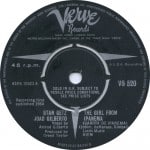 In 1964, America’s musical tastes had not yet fully polarized. While the wave of British hits washed over us, there was still an eclecticism to the WKNR play list that made it possible for a jazz legend to link up with a Brazilian samba singer and have a hit record.
In 1964, America’s musical tastes had not yet fully polarized. While the wave of British hits washed over us, there was still an eclecticism to the WKNR play list that made it possible for a jazz legend to link up with a Brazilian samba singer and have a hit record.
Such was the unique story of the Stan Getz / Astrud Gilberto partnership. Getz came into the spotlight in the 1940s as the silky smooth tenor sax player in Woody Herman’s Thundering Herd big band. He was introducing bosa nova to American ears when he teamed up with Gilberto, who was a last minute choice to record the vocals for “The Girl From Ipanema”. Continue reading “Keener Bosa Nova” →
The Flaming Ember
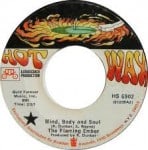 Here’s a trivia question: What blue-eyed soul band refused to sign with Motown but found fame thanks to three of Motown’s greatest contributors?
Here’s a trivia question: What blue-eyed soul band refused to sign with Motown but found fame thanks to three of Motown’s greatest contributors?
Of course we’re talking about Detroit’s own Flaming Ember. They first recorded for Ric Tic Records in 1967, but when Berry Gordy, Jr. folded Ric Tic into Motown, The Flaming Embers, as they were then known, decided to explore other options.
The label that they ultimately chose was Hot Wax, the brain child of Motown creative geniuses Brian Holland, Lamont Dozier, and Edward Holland, Jr.. They charted six times on Keener with “Mind, Body and Soul”, “Not My Brother’s Keeper”, “Westbound Number 9″,”Shades of Green” and “Sunshine”. Many remember “Westbound Number 9” as their favorite Flaming Ember tune, but it was “Mind, Body and Soul” that was their only Keener Number 1. Continue reading “The Flaming Ember” →
The Beatles Last Public Concert
 By 1969, the fissures in the Beatle brand were widening. All four had individual projects under way. The death of their manager, Brian Epstein, brought them closer than perhaps they wanted to be to the business side of the music. And the group’s artistic visions were diverging. The creation of their final album and the palpable tension that was simmering behind the facade was documented in the film “Let It Be“.
By 1969, the fissures in the Beatle brand were widening. All four had individual projects under way. The death of their manager, Brian Epstein, brought them closer than perhaps they wanted to be to the business side of the music. And the group’s artistic visions were diverging. The creation of their final album and the palpable tension that was simmering behind the facade was documented in the film “Let It Be“.
33 years ago today, the Beatles played what can be defined as their final public performance. The un-announced event happened on the rooftop of Apple Records and probably irritated as many neighbors as it attracted.
The album’s penultimate single, “The Long And Winding Road” peaked at number one on the WKNR Music Guide the week of March 17, 1970.
The History of Detroit Radio
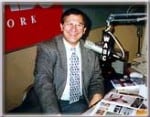 Keenerfans across Detroit remember the weekend that we switched over to WDRQ to hear Art Vuolo‘s superb “History of Detroit Radio” documentary. From beginning to end, it was a well researched and well crafted tale of the golden age of Detroit Top 40 broadcasting.
Keenerfans across Detroit remember the weekend that we switched over to WDRQ to hear Art Vuolo‘s superb “History of Detroit Radio” documentary. From beginning to end, it was a well researched and well crafted tale of the golden age of Detroit Top 40 broadcasting.
It’s just one of dozens of treasures you’ll find at the re-launched Motor City Radio Flashbacks website. George Griggs and Jim Feliciano are steadily adding to the worlds largest archive of Detroit radio sights and sounds.
Whether or not you were one of the first listeners to The History of Detroit Radio when it first aired, it’s well worth reconnecting with this important dimension of the legend and it’s extended segment on the birth and prime of WKNR.
Eileen and “The New Keener Guy”
 From the fantastic DetroitMemories.com website. Eileen Trombley Glick remembers her first encounter with the new guy at WKNR. Someone from an Ohio radio station named Dick Purtan.
From the fantastic DetroitMemories.com website. Eileen Trombley Glick remembers her first encounter with the new guy at WKNR. Someone from an Ohio radio station named Dick Purtan.
Eileen was looking for an emcee for a charity auction. “Most of my co-workers hadn’t much heard of him (yet), so I offered to make the call and ask if he would consider the honors. Much to my surprise, he agreed right away.”
Number one this week in 1967
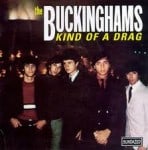 Our look through the Keener 1967 archives continues with two takes on The Buckingham’s most popular record. By the time “The Pulsations” got a job as the house band on WGN’s “All Time Hits” television program, the British Invasion was in full swing. When the show’s producers suggested that the band take on a British name to capitalize on the event, a security guard suggested The Buckinghams.
Our look through the Keener 1967 archives continues with two takes on The Buckingham’s most popular record. By the time “The Pulsations” got a job as the house band on WGN’s “All Time Hits” television program, the British Invasion was in full swing. When the show’s producers suggested that the band take on a British name to capitalize on the event, a security guard suggested The Buckinghams.
What followed was a string of 4 Keener hits, beginning with the Jim Holvay penned “Kind of a Drag“. The song reached number one the week of January 23rd and as the year came to an end, “Kind of a Drag” was the 9th most popular record of 1967.
Holvay had the magic touch and his contributions to “Don’t You Care,” “Hey Baby (They’re Playing Our Song),” and “Susan” kept the Buckinghams on the WKNR Music Guide for the next year and a half.
Three decades later, the band released the “Terra Firma” collection, which included this very listenable a capella version of “Kind of a Drag”.
Welcome Back, Motor City Radio Flashbacks!
 If you’re like us, you were a regular visitor to the Detroit Radio Flashbacks website. With 31 gigs of air checks, music and memories, it was a favorite stop for a taste of Motor City radio history. Now Jim Feliciano is in the process of resurrecting the site with a new name: Motor City Radio Flashbacks.
If you’re like us, you were a regular visitor to the Detroit Radio Flashbacks website. With 31 gigs of air checks, music and memories, it was a favorite stop for a taste of Motor City radio history. Now Jim Feliciano is in the process of resurrecting the site with a new name: Motor City Radio Flashbacks.
The site just went up today, so it will take some time before Jim gets everything in his collection back on-line.
Bookmark mcrfb.com and pass the word!
The “Lost” George Harrison Guitar Solo
From WCBS-FM: George Martin deconstructs the mix of The Beatles “Here Comes the Sun” and discovers a track he had forgotten about. Son Giles and George’s son, Dhani are witnesses.
Question: Would you have put the solo in the final mix, or not?

